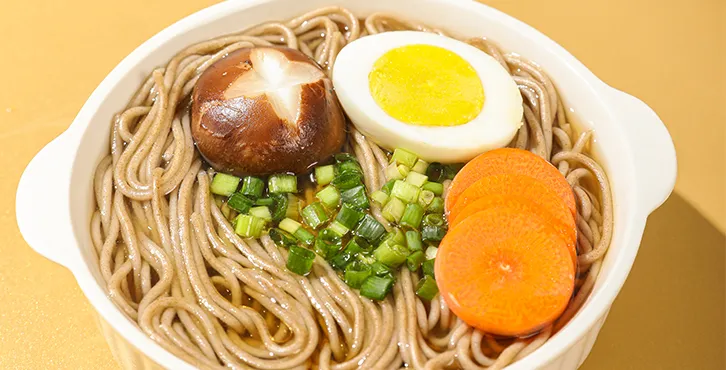Italian-style Egg Noodles for Delicious Homemade Pasta Creations and Recipes
The Rich Tradition of Italian Egg Noodles
Italian cuisine is renowned worldwide for its diversity and richness, and at the heart of this culinary landscape lies a treasure often overshadowed by popular dishes like pizza and pasta. Italian egg noodles, or pasta all'uovo, represent a special category within the pasta family, distinguished by their unique preparation and sumptuous taste. These noodles are not just a staple food in Italy; they are a symbol of comfort, tradition, and the art of home cooking.
Origins and Ingredients
Egg noodles have a long history in Italy, believed to date back to ancient times. The key distinguishing feature of these noodles is their incorporation of eggs into the dough. Traditionally, the basic ingredients for Italian egg noodles include all-purpose flour and fresh eggs, sometimes supplemented with a pinch of salt. The flour provides the structure, while the eggs add richness, flavor, and a beautiful golden hue to the pasta.
The use of eggs can be attributed to the northern regions of Italy, where fresh eggs were abundant. In contrast to semolina-based pasta, which predominates in the southern regions, egg noodles are often rolled out thinner and exhibit a tender, delicate texture that pairs exceptionally well with a variety of sauces.
Crafting the Perfect Egg Noodle
Making Italian egg noodles from scratch is a culinary art that brings families together. The process typically begins with forming a well of flour on a clean surface or in a bowl, where eggs are cracked and gently beaten. The encouraging sensation of kneading the dough is not just about combining ingredients, but rather about participating in a time-honored tradition passed down through generations.
Once the dough has been kneaded to a smooth consistency, it is wrapped in plastic and allowed to rest. This resting period is crucial, as it relaxes the gluten, making the dough easier to roll out. After resting, the dough can be rolled out into thin sheets, then cut into various shapes, from tagliatelle to lasagna sheets. The endless possibilities of shapes and sizes make homemade egg noodles a versatile choice for any dish.
Culinary Applications
italian egg noodles

Italian egg noodles shine in several classic recipes. One of the most celebrated dishes is Tagliatelle al Ragù, a hearty meat sauce typically found in Bologna. The wide, flat ribbons of tagliatelle provide an ideal surface for the rich, robust flavors of the ragù to cling to, resulting in a satisfying meal that embodies the essence of Italian cooking.
Another beloved dish is Lasagna, where layers of egg pasta sheets intermingle with rich Bolognese sauce, béchamel, and cheese, creating a comforting, indulgent feast. The use of egg noodles in lasagna enhances its flavor and texture, making each bite a delightful experience.
Moreover, egg noodles are perfect for simple preparations as well. Tossing freshly cooked noodles with olive oil, garlic, and fresh herbs can create a quick, wholesome meal that exemplifies the Italian philosophy of using quality ingredients to make simple yet flavorful dishes.
A Symbol of Togetherness
In Italian culture, sharing food is a way of expressing love and community. Homemade egg noodles are often a centerpiece during family gatherings and special occasions. The process of making pasta together fosters connections and creates lasting memories, reinforcing the idea that cooking is not just about the food, but about the relationships that are built around it.
Over the years, the popularity of Italian egg noodles has transcended borders, inspiring variations in cuisines around the world. Many chefs and home cooks alike appreciate their versatility and the unique flair they bring to dishes.
Conclusion
Italian egg noodles encapsulate the beauty of Italian culinary traditions, combining simple ingredients to create something extraordinary. Whether served in a rich sauce, layered in a baked dish, or enjoyed in a simple sauté, these noodles embody the spirit of Italian cooking a celebration of life, love, and the joy of good food. As you twirl a forkful of tagliatelle or dig into a warm plate of lasagna, remember that you are not just savoring a meal; you are partaking in a rich tapestry of history, culture, and togetherness that defines Italian cuisine.
-
Unleash Your Inner Chef with Delectable Italian Pasta CreationsNewsAug.01,2025
-
Savor Health and Flavor: Irresistible Soba Noodles for Sale Await!NewsAug.01,2025
-
Nourish Your Body with Premium Organic Ramen - A Culinary Delight AwaitsNewsAug.01,2025
-
Elevate Your Dishes with Our Exquisite Kinds of Egg NoodlesNewsAug.01,2025
-
Dive into Flavorful Convenience with Our Ramen OfferingsNewsAug.01,2025
-
Discover Exquisite Types of Naengmyeon and Chilled Soba NoodlesNewsAug.01,2025
-
Is Whole Wheat Pasta Healthy?NewsMay.30,2025
Browse qua the following product new the we

















































































































